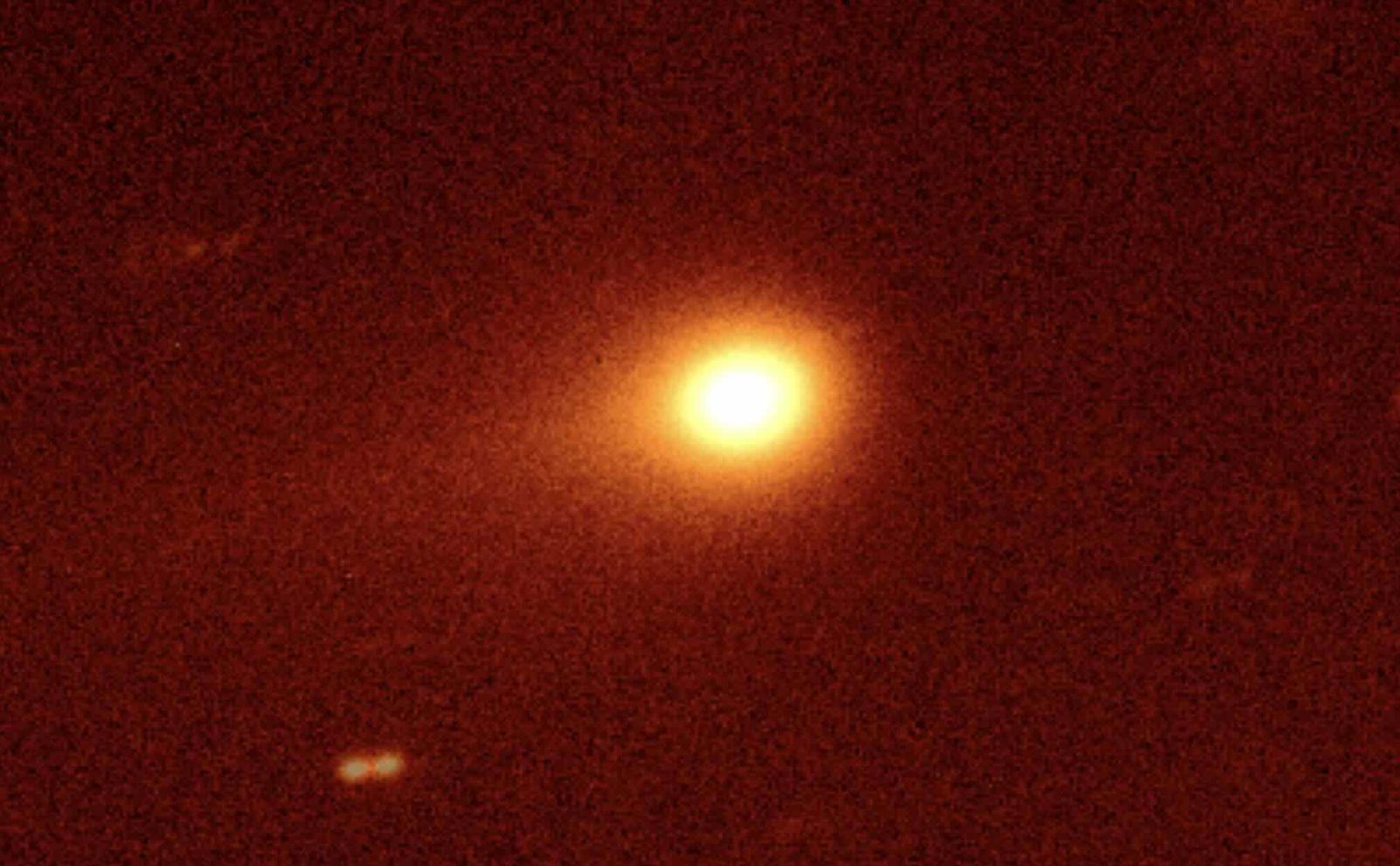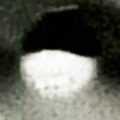 Gemini South observation of 3I/ATLAS from August 2025 (Credit: Gemini Observatory Archive).
Gemini South observation of 3I/ATLAS from August 2025 (Credit: Gemini Observatory Archive).
Welcome to this edition of The Intelligence Brief… This week, astronomers continue to unravel the mysteries of the interstellar comet 3I/ATLAS, whose latest observations have revealed a host of new anomalies that defy expectations. In our analysis, we’ll explore 1) how Keck Observatory data confirm the presence of an unusual “anti-tail” and a nickel-rich, iron-free gas plume suggesting exotic chemical processes, 2) what new TESS observations reveal about the comet’s faint or possibly inactive coma, 3) how its unusually slow dust ejection rates challenge standard models of cometary behavior, and 4) why 3I/ATLAS may redefine what scientists understand about the makeup and origins of interstellar visitors.
Quote of the Week
“3I/ATLAS has indeed developed an anti-solar tail as of late August.”
– Willem Hoogendam, et al, “Spatial Profiles of 3I/ATLAS…”
If you enjoy the news and perspectives offered by The Debrief, make sure that you aren’t missing our stories by making us one of your “preferred sources” on Google News. You can simply follow this link to add The Debrief to your list of favorites, and you can read more about Google’s preferred sources in our recent article here.
RECENT NEWS from The Debrief
3I/ATLAS Continues to Exhibit Unusual Features
A series of new astronomical observations has deepened the mystery surrounding the unusual interstellar object 3I/ATLAS.
The strange comet has captured the fascination of astronomers around the world for several months, following its discovery on July 1, 2025. With its recent close flyby past Mars, new imagery obtained by the European Space Agency and NASA has continued to intrigue the scientific community, while high-resolution images believed to have been obtained by NASA’s HiRISE camera aboard the Mars Reconnaissance Orbiter have yet to surface amid the current U.S. government shutdown.
That isn’t to say that there isn’t new information being revealed about the unusual interstellar object in lieu of NASA’s ability to deliver its latest data to the public. And right now, the most recent findings about the odd cosmic visitor are only adding to its enduring intrigue.
Keck Telescope Reveals “Anti-Tail” and More Metal Mysteries
Among the latest observations of the interstellar object 3I/ATLAS were those made by the Keck II telescope in Hawaii, which have revealed striking anomalies that continue to set it apart from any known comet.
The data, collected in August and revealed in a recent paper, now confirm the existence of an unusual “anti-solar tail” the object is producing, which points toward the Sun rather than away from it.
Additionally, the object exhibits a gas plume rich in nickel but lacking iron—an elemental imbalance not seen in any other comet, including the object’s interstellar predecessor 2I/Borisov. Spectral analysis of the Keck data indicates that 3I/ATLAS may be undergoing a rare nickel-carbonyl formation process, a chemical pathway previously observed only in industrial nickel refinement on Earth.
Fundamentally, these discoveries suggest the object could be undergoing some pretty exotic chemical reactions within its nucleus, potentially offering unprecedented insight into the diversity of interstellar materials and processes. Add to that the fact that the object is losing materials at a highly unusual rate, along with a range of other factors, making 3I/ATLAS an item of growing intrigue in the astronomical community.
A full report on the latest Keck II Telescope findings can be found in our latest reporting here at The Debrief, with additional recent updates available here, along with some information about some of its strangest qualities described here.
No Sign of a Coma in New Tess Data
However, the recent Keck Observatory findings aren’t the only new information on 3I/ATLAS that has emerged in recent days. According to a separate study featured in Research Notes of the AAS, data from NASA’s Transiting Exoplanet Survey Satellite (TESS) has provided an additional glimpse at 3I/ATLAS, revealing its own oddities. Specifically, the new findings reveal faint signs of cometary activity that researchers Tony Farnham, Max Hood, Michael Kelley, and Jessica Sunshine say challenge standard models of dust ejection.
Based on observations made between May and June 2025, the researchers analyzed more than 9,000 TESS images, stacking them into composite frames. Their focus was to search for any signs of a visible coma, the envelope of gas and dust that is generally visible around active comets.
What they found was surprising, though: unlike typical comets, 3I/ATLAS appeared to exhibit a radial profile that was almost identical to inactive bodies—in other words, there was no sign of a coma in the data they reviewed.
Challenging Standard Models?
While the team’s observations are indeed challenging, they say that their observations also show that 3I/ATLAS appears to be brighter than expected, especially when compared to earlier Hubble Space Telescope data. This means that a small, unresolved coma could still be present within the central point-spread function of the images.
The team suggests that if this activity is sustained, it could mean that dust released from the comet is being ejected at rather low speeds, perhaps as little as 10 meters per second, which would be slower than the speeds typically associated with material released by comets. The observations are notable, especially given the types of material and the significant amounts that 3I/ATLAS is reportedly producing (more on this can be found here).
This subdued behavior, combined with the object’s previously reported chemical oddities, reinforces the view that 3I/ATLAS is unlike any comet observed to date, and might possibly reflect unique formation conditions in its extrasolar origin system.
Fundamentally, while 3I/ATLAS remains very unusual, none of the latest data suggests it is anything other than a comet that exhibits some remarkable features. Still, it remains a scientific enigma that is expanding our ideas about interstellar space. Ongoing studies may help to further redefine what astronomers know about its composition and, more broadly, the behavior of similar interstellar comets we can expect to find in the years ahead.
That concludes this week’s installment of The Intelligence Brief. You can read past editions of our newsletter at our website, or if you found this installment online, don’t forget to subscribe and get future email editions from us here. Also, if you have a tip or other information you’d like to send along directly to me, you can email me at micah [@] thedebrief [dot] org, or reach me on X: @MicahHanks.

Scientists Build Artificial Neurons from Bacteria That Communicate Like Real Brain Cells
UMass scientists create low-voltage artificial neurons from bacteria that communicate with living cells, similar to real brain cells.
Pentagon-Funded Scientists Deploy Ultrafast Lasers to “Draw” Crystals on Gold Nanoparticles
Scientists funded by the U.S. Department of Defense have created a new way to ‘draw’ customized crystals with ultrafast lasers.
Engineers have developed a ‘Chinese lantern’ structure that can shape-shift into various three-dimensional forms on command.
From WW II submarines to 19th-century trade shipwrecks, the Wisconsin Maritime Museum illuminates the history of Canadian-American relations.
Google’s new “preferred sources” feature allows users to pick their favorite news sources. Here’s how to add The Debrief to your favorites.
This week, a hidden “Planet Y” may exist beyond Neptune, debate over a future “neuro elite” erupts, and scientists achieve a levitation breakthrough.
Researchers are “growing” metals and ceramics using 3D printing technology, producing hydrogel-based materials up to 20 times stronger than average.
Boeing Unveils New “CxR” Tiltrotor: A Drone Wingman Aiming to Redefine Army Aviation
Boeing unveils its new CxR unmanned tiltrotor concept, a modular drone designed to transform future Army aviation operations.
New research reveals Mars’ mysterious gullies were carved by burrowing CO₂ ice blocks, not water, reshaping its story.
Research reveals that ancient Homo sapiens and Neanderthals encountered unexpected levels of lead exposure, shaping how our brains evolved.
Scientists have detected a mysterious series of very strong radio signals coming from beyond a distant galaxy, marking an astronomical first.

